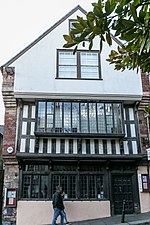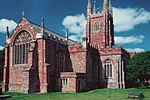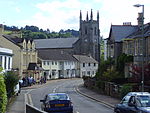Totnes

Totnes ( or ) is a market town and civil parish at the head of the estuary of the River Dart in Devon, England, within the South Devon Area of Outstanding Natural Beauty. It is about 5 miles (8.0 km) west of Paignton, about 7 miles (11 km) west-southwest of Torquay and about 20 miles (32 km) east-northeast of Plymouth. It is the administrative centre of the South Hams District Council. Totnes has a long recorded history, dating back to 907, when its first castle was built. By the twelfth century it was already an important market town, and its former wealth and importance may be seen from the number of merchants' houses built in the sixteenth and seventeenth centuries. Today, the town has a sizeable alternative and "New Age" community, and is known as a place where one can live a bohemian lifestyle. Two electoral wards mention Totnes (Bridgetown and Town). Their combined populations at the 2011 UK Census was 8,076.
Excerpt from the Wikipedia article Totnes (License: CC BY-SA 3.0, Authors, Images).Totnes
Mill Tail, South Hams
Geographical coordinates (GPS) Address Nearby Places Show on map
Geographical coordinates (GPS)
| Latitude | Longitude |
|---|---|
| N 50.432 ° | E -3.684 ° |
Address
Mill Tail
TQ9 5DE South Hams
England, United Kingdom
Open on Google Maps








